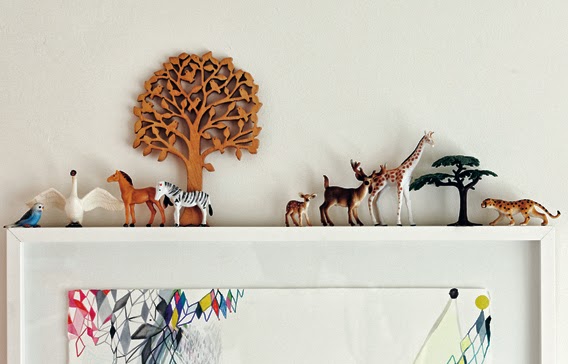While us interiors obsessives may fantasise about having our homes gracing the pages of some glossy magazine, there's always the risk of over-styling – but there are still some basic aesthetics that can make your place sparkle, without taking it all too seriously and becoming a pastiche.
So with that on the table, I'm revisiting a piece I wrote for the Independent a while back on this very topic – but with a bundle of bonus tips we never had room for in the paper: interiors stylists and a photographer give their opinions on how to photo-shoot up your home. But it doesn't have to be for the camera.
One of the many stark rooms featured on the marvellously comforting blog, Terrible Real Estate Photos.
“A photographer’s nightmare,” explains Rachael Smith, who takes very lovely pictures for magazines such as World of Interiors, “is a home with no possessions on show. Editors want ‘detail’ shots – plus nick-nacks make a home a home, create a sense of intimacy.” For the opposite of this, see above.
A "visual vignette" from Selina Lake's lovely book, Pretty Paste Style.
“Most photo-shoots capture pictorial vignettes – the sofa, the table, the casually draped throw,” says Beth Worth, who provides affordable home makeovers at lovehousedesign.com. “So it’s not just about furniture; create a little narrative.”
Small, affordable details – flowers, colourful cups, a cushion, a little print and a rug – create "safe" bold in this otherwise neutral kitchen. Also featured in Selina Lake's latest book.
And
bold doesn’t equal expensive or scary, believes Beth. “If you’re nervous,” she
says, “build on a neutral base, then take risks with accessories: zingy
cushions or throws, a fabulous ceramic jar – cheaper than the wrong sofa.”
Rachael’s top tip? “Have a massive spring clean,” she says. “Get rid of all the stuff you don’t need. People keep things they really shouldn’t for sentimental reasons. The amount of cleaning I do in people’s homes before being able to shoot is incredible… especially in bathrooms.”
On the decluttering tip, Rachael underlines the importance of good storage. “But not expensively built-in stuff,” she says. “In a photograph that generally looks really boring. Instead, how about a 50s cabinet from a junk shop to keep your books in? Or a haberdasher’s cupboard for clothes, instead of sliding-door wardrobes. It’s far quirkier and more visually interesting.”
But Rachael’s biggest bête noir is TVs: “They’re so huge these days – and not pretty things. Hide it in a cupboard – and definitely never put it over a fireplace.
With a TV-hiding cupboard, drill a good-sized round hole in a bottom corner to feed the wires and cables through. "A good tip for all pieces of furniture that might be holding electrical equipment, whether hi-fis, lamps or TVs," says Rachael. "There is an increasing number of cable tidies on the market these days. With a little research you can find something that suits your home." Perhaps like this one, above, which we featured a while back.
Emily Blunden, a stylist for magazines including Homes and Gardens and Guardian Weekend, as well as a blogger under the moniker Atticus and Finch concurs: "On one shoot, I saw a TV hidden inside an antique glass cabinet – but with good-looking fabric pinned inside hiding the TV, and brightening the cupboard. Very nice." Or make like designer, Abigail Ahern, who has a fantastically simple TV camouflage idea: if your black TV is wall-mounted, paint that wall black too (pictured above, and here are more of Abigail's style tips).
Wooden crate shelves, above, from Reclaimed Interiors in the US. You can find heaps of wooden crates for sale on eBay.
Contributing ed Abi's jewellery storage, which she wrote about here.
Emily continues: “Investigate different ways of displaying too; different shelving will produce different styles and will require different bits and bobs; printer block units make for lovely shelves, as do old apple crates.”
“Don’t worry about trying to aim towards anyone style or not having the 'right' things or things that go together," says Emily. "There is no right or wrong and the best style is your own personality. And remember – nothing has to be forever.” Hear, hear.
That said, she continues, “There’s a big difference between an obsessive collector and someone who just has nice things. So don’t overdo it. And, by the way, they don’t need to be expensive things... a photogenic house needs personality, it doesn’t need extreme wealth.” The vast photographic tome, A Place Called Home, by Australian stylist Jason Grant is a good place for inspiration on this front. Above, toy plastic animals add affordable character to a framed artwork.
My own top tip, from writing about homes, is not to strive for perfection, as perfectly finished homes can look sterile – magazines are always after a ‘story’: and it’s hard to write one about nothing. Which is why this story from The Kitchn website (a snippet of which is above), about "real" kitchens, is one of my all-time favourites.










No comments :
Post a Comment